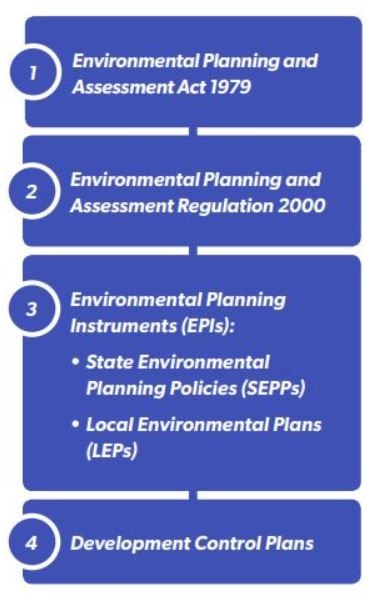The development framework
State and local planning legislation and policies set the rules that control what development can occur on your land.
The planning system has a hierarchical structure with the Environmental Planning and Assessment Act 1979 sitting at the top of the hierarchy, as shown below.

Environmental Planning Instruments
Environmental planning instruments (known as EPIs) provide controls and requirements for specific land use types and localities.
There are two types of EPIs. They are state environmental planning policies (known as SEPPs) and local environmental plans (known as LEPs).
State environmental planning policies are prepared by the State Government. They permit development and set controls for developments or matters that are of importance to the whole State.
You can view SEPPs that are in force on the NSW Government's list of current legislation.
Local environmental plans are prepared by councils. They zone land, provide for development permissibility and set local controls. Local environmental plans guide planning decisions for local government areas. They do this through zoning and development standards and requirements, which provides a framework for the way land can be used.
To find out more view our Local Environmental Plan.
Development Control Plans (DCPs)
Development control plans (known as DCPs) support the controls outlined in the Local Environment Plan (LEP).
To find out more about our development control plan go to the Coffs Harbour DCP 2015.